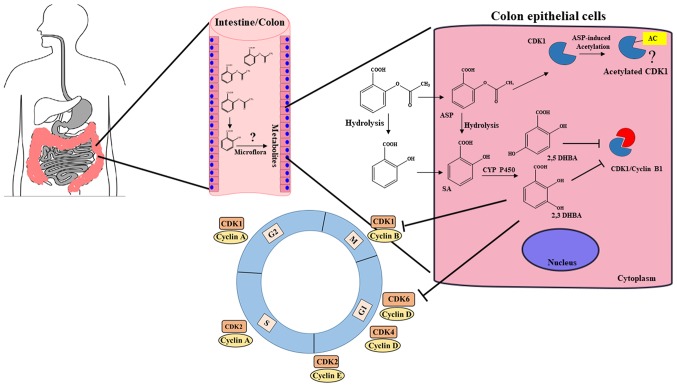Figure 8.
A model depicting how aspirin may preferentially act on colonic tissue to protect against CRC. We suggest that unabsorbed aspirin/salicylic acid in the stomach and upper intestine is passed on to the colon, taken up by the colonic epithelial cells, and metabolized by CYP450s to produce 2,3-DHBA and 2,5-DHBAs. These hydrophilic DHBAs may not easily cross the basolateral membrane of the epithelial cells and within these cells, they may accumulate to pharmacologically relevant concentrations, leading to the inhibition of CDK1 and CDK6, and exert anticancer effects. Colonic epithelial cells may also get exposed to salicylic acid metabolites generated by the gut microflora, and uptake of these HBAs by cells may also cause CDK inhibition. This additional layer of protection against tumor development may be unique to the colonic tissue allowing aspirin as a more effective drug against CRC. (?), Aspirin acetylates CDK1; however, how this modification affects its function is not clear at this stage.

